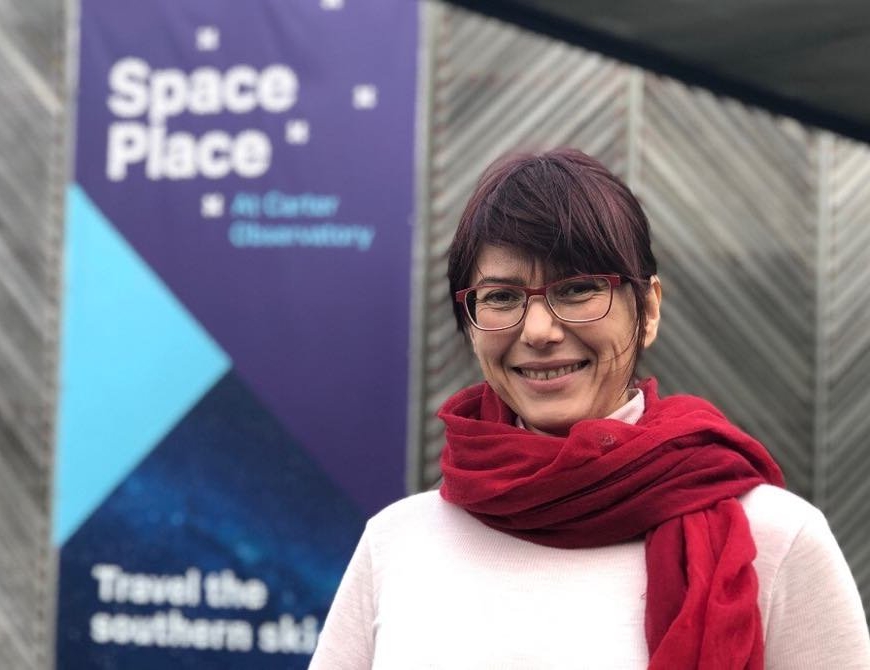You can contact LEARNZ, part of CORE Education, at:
Postal Address:
PO Box 13 678,
Christchurch 8141,
New Zealand
Astrobiologist, Senior Science Communicator.
<- Homepage: Matariki and navigation from Kupe to Cook to Today
I am bringing the frontier of astrobiology closer to everyone. I do this by participating in amazing space events. I trained for Mars missions, flew on the SOFIA space telescope, looked for life in the hot pools in Rotorua and in the Utah desert, went to NASA and learned about biosecurity in space. Currently I look through telescopes and I teach people about our amazing night sky.
I write about all these and more amazing things that are happening in space or are related to space. Astrobiology is all about finding out what is life, if we are alone in the Universe and what is the future of humankind.
I worked for 10 years for the New Zealand Government in biosecurity, and since 2005 in parallel for Carter Observatory (now Space Place), and also for the New Zealand Astrobiology Network.
I love every second of my job as I do what I am passionate about.
We are doing a campaign at Space Place called “Know your night skies” and we want to teach everyone in Wellington about our amazing night sky. We do that by creating courses and events where we explain and celebrate space.
In 2015 I organized Spaceward Bound New Zealand, the first official astrobiology field trip to New Zealand, bringing people from NASA and around the world to connect with New Zealand teachers and students. It took about 3 years to organise, first I wanted to understand if New Zealand was significant for astrobiology so I set to connect with everyone I knew that could help me. Fortunately New Zealand has all the ingredients to be the perfect place to study astrobiology: hot pools, volcanic environments and cold places, these all are perfect for analog planetary exploration – that is when you go to places on Earth to understand how other places in the Solar System might be. The Dry Valleys in Antarctica are analogues for Mars for example.
For this project I also needed to form a network of people whose expertise contributed to the success of the expedition. We had some of the best astrobiologists in the world with us and some of New Zealand’s best scientists in the field. Following that three students decided to study space that year so this was the best reward I could ever have.
When I went to train for Mars in the Utah desert we had to eat astronaut dried food only as part of the simulation. The organisers were trialing various types of astronaut food on us and we had to write a daily report to say whether we liked it or not. We were given one bag of seed that we had to grow into sprouts so that we had a bit of fresh food among all that dryness. For whatever reason we failed to start them so instead of sprouts we only grew some mould. Therefore we had no fresh food for two weeks and at the end of it I would have given anything for a leaf of salad or a piece of broccoli. I learned that I will never ever complain when my mum suggests I must eat more fresh vegetables!
Horticultural Engineering degree, Masters in Environmental Management, Masters in International Security with endorsement in Intelligence.
Stars, astronomy, growing plants and interior design (very useful when you live on a spaceship in tiny spaces).

Haritina is the Senior Science Communicator at Space Place in Wellington. Image: Space Place.